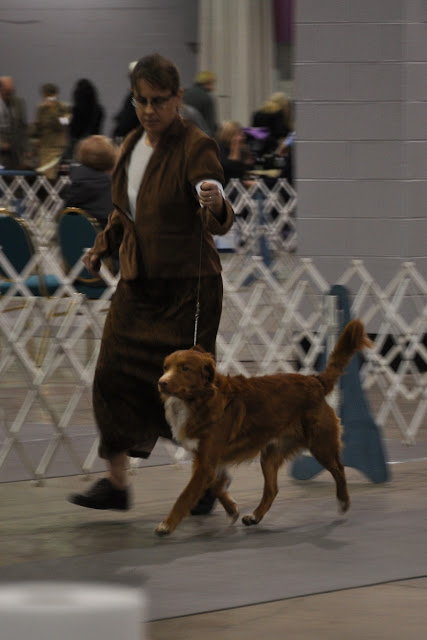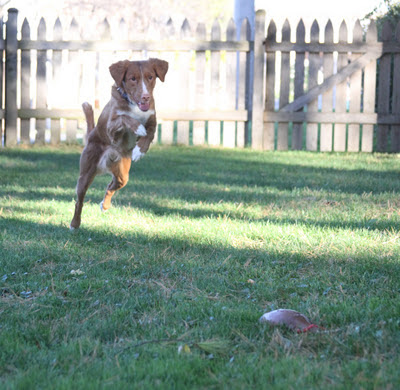June has been a pistol from the time she popped out of Ghillie’s womb. The only female in a litter of two, she left her brother behind – literally! – when she began scaling the puppy x-pen around 6 weeks of age. I raised it once, from 24” to 30”, but decided not to raise it further as all evidence pointed toward June continuing to climb her way to freedom with simply a bigger drop to navigate after reaching the top. Curiously, she only seemed to attempt this when I was home. It was this combination of agility, determination and social attraction that made me want her to stay.
As a puppy, June’s most often employed nick name was “the devil”. She was a force of nature, as one of my friends put it. She greeted visitors like a freight train and used the living room furniture like a training ground for a future possible assent to Mount Everest. This was not encouraged, of course, and on the many occasions when June could not settle herself she earned some time in her crate. I generally crated her in the bedroom, same as her nighttime accommodations, and her vocal protest was clearly audible three rooms away. We endured her displeasure with gritted teeth, knowing that to let her out while she was vocalizing would only serve to strengthen her remonstration. I worked harder with June as a puppy than any other dog we have had so far. I remember walking her down in the backyard to enforce the concept of a reliable recall. From puppyhood, I drilled in a wait and release command for her supper. Always happiest in motion, June’s greatest struggles in obedience revolved around the stationary exercises; sit, down and stand stay. We worked at these for nearly a year before she achieved any degree of reliability.
At 5.5 years old, June has settled some but remains the most animated, provocative Toller I have ever owned or bred. She is mainly handicapped by my ability as a trainer/handler. Not only does she want to work, she needs to in order to be a contented member of the household. Thrilled as I am with her performance potential, I realize her high drive and exercise requirements would make her extremely challenging at best in most households. The same traits I treasure make me very careful when considering potential studs for June. While I’m not looking for a couch potato I do seek to temper June’s drive with a dog who takes things a little more in stride. Breaker was a good choice for June’s first litter. Two puppies have their AKC Championships and a third is only a point away, two of them have multiple agility titles, one has a WC, CD and RN and two are hunted over. All have much of their mother’s spirit but are tempered by their sire. I’m confident my second choice for June will produce similar results, and I’m looking forward to her planned litter for 2011.
 He is fortunate to live with talented and dedicated trainers who are already beginning to bring out the best of what he has to offer in just about every venue imaginable. Tobago is currently active in disc dog events, and in training for rally, obedience, agility and field.
He is fortunate to live with talented and dedicated trainers who are already beginning to bring out the best of what he has to offer in just about every venue imaginable. Tobago is currently active in disc dog events, and in training for rally, obedience, agility and field. 


































